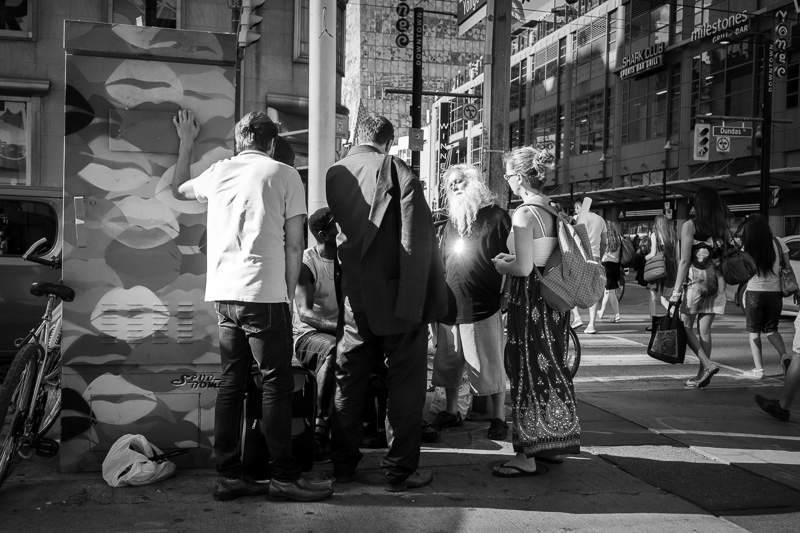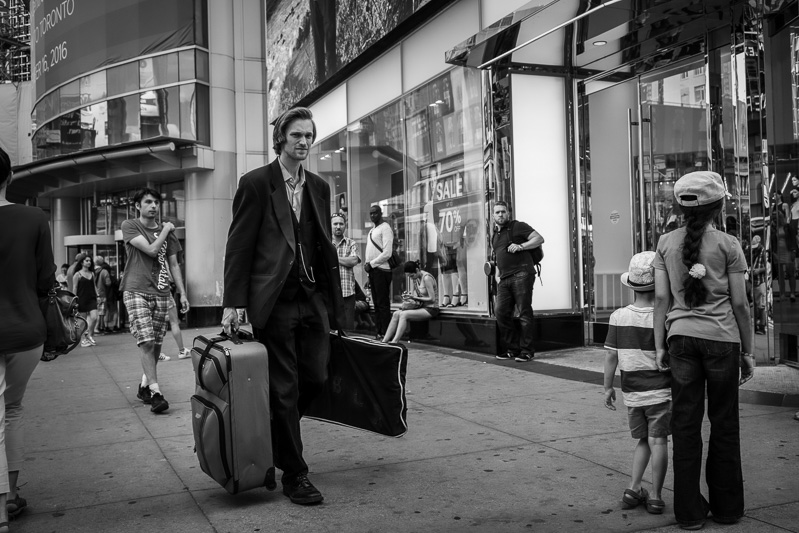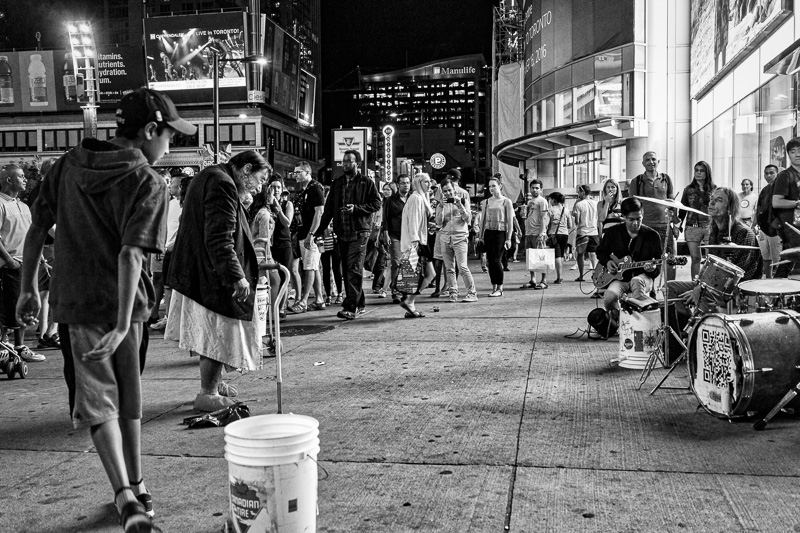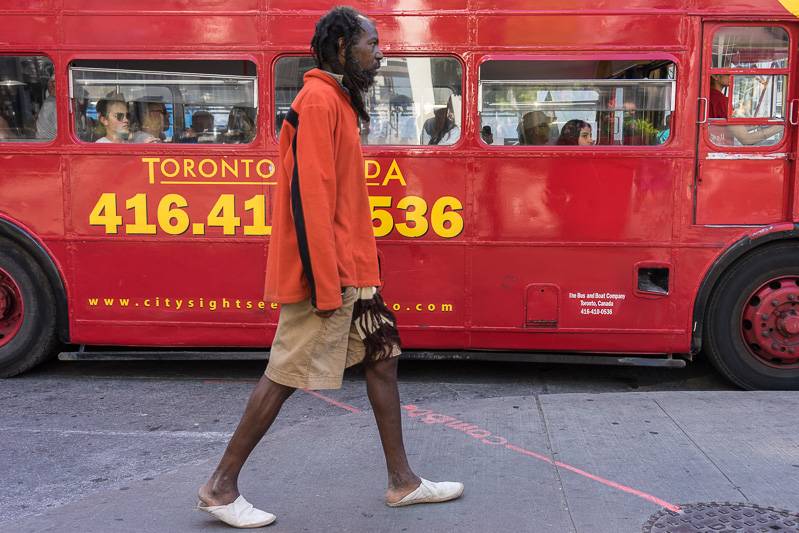I once had a professor who was the most humourless man I’d ever met. Do you remember Kingsfield from The Paper Chase? My professor was like Kingsfield. He seemed to delight in grinding students into piles of dust through inquisition-sytle interrogations and public humiliations. Yet one day my professor cracked a joke. Apropos of nothing, he said to the class: “As my uncle Max once told me, never marry for money; go to where money is and marry for love.” Most of us were too stunned to laugh. Our jaws fell open and we let out choked gurgling sounds.
I wouldn’t mention the joke except that it illustrates an interesting point that’s transferable to photography. Sometimes, it seems that what makes an image interesting has little to do with skill, and everything to do with luck. A preacher is talking to his acolytes and turns at just the right angle so that the cross dangling around his neck catches the sunlight. It looks as if a holy light blazes from his chest. A one in a million shot, or so it would seem. And yet these one in a million shots are more like one in a hundred shots. They happen again and again. The reason, I think, has something to do with uncle Max’s advice.


In photography, never rely on luck; go to where luck is and rely on skill. Or, to put it differently, an essential part of the photographer’s craft is to engineer luck. In the genre of street photography, a good way to engineer luck is to place yourself in a heavily traveled public space when the light is good and shoot and shoot and shoot. In Toronto, one of those lucky locations is the southwest corner of Yonge & Dundas Streets. There, it’s easy to shoot people in a crowd (fish in a barrel, as they say). The challenge is to isolate an individual, or a discrete interaction, so that they don’t get lost in the onslaught of people.

People are streaming across the intersection. Every third change of the lights is an all-way crossing for pedestrians. They head north to the movie theatres or the HMV or the liquor store or the Ryerson campus. They head south to the Yonge/Dundas Square or the Eaton Centre or the Hard Rock Café. A break appears and a young man emerges from the crowd. He carries a suitcase and garment bag. More distinctive, though, is that fact that he wears a vest and carries a pocket watch. It’s as if he’s stepped from a time warp and into my frame.
After dark, as I’m walking home from a film, I pass through the same corner of the same intersection. Three men are playing drums. That in itself isn’t particularly interesting. Buskers form one of the many tired clichés of street photography. I’m prepared to ignore them except that the crowd encircling them isn’t watching them. I follow their stares to an older man in hospital garb and blue booties who has set his cane to one side and is dancing to the rhythms. I use the term “dancing” loosely. A teenager drops a coin in the bucket and swings around the old man. What is happening here? Where has the man come from? The drummers call him by name. Is he a regular? And what about the audience? Many of them have smartphones raised to shoot pictures of the old man. Do they care about him? Do they feel concern? Or are they voyeurs? Are they the sort of people who would cheer at a train wreck?

Speaking of voyeurs, I’m fascinated by tourists. They ride around in their red double-decker buses. Here’s the museum. There’s the CN Tower. Look at Casa Loma up there on the hill. It strikes me as a rather sanitized way to view things. At a granular level, things are not so pretty but they are definitely more interesting. Step out of the bus and meet real people! Or are you afraid that would that shatter your pleasant idealized view of the city? Below, a red tour bus passes a man as it pulls to its stop on the southeast corner of Yonge & Dundas. I wonder what they think of this man. I wonder if they even see him.
